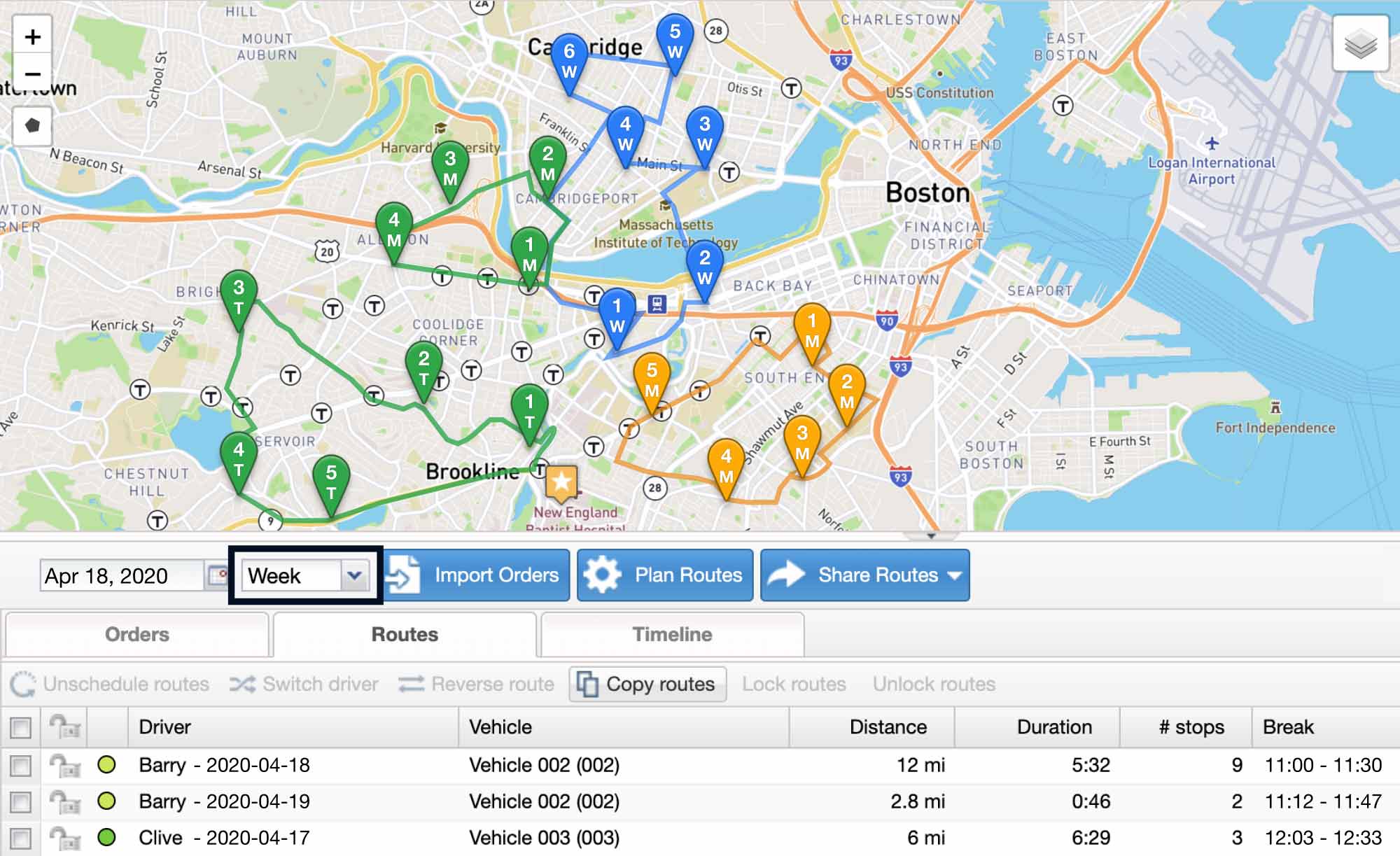How to Start, Optimize, and Grow a Septic Business [2024 Guide]

Starting a septic business is profitable. It also presents plumbing company owners with the option to expand their offerings to include septic maintenance and management services. While these services are crucial for home maintenance, the job is dirty and many field service technicians want to avoid this type of work. This creates a surplus of work for the few businesses there are, making it profitable to start a septic business.
Starting a successful septic business begins with identifying your startup costs and progresses to include tasks like marketing to grow your customer base. For your business to see long-term success, you’ll need to know who your competitors are, build a business plan, and expand your team. You’ll also need tools to help improve efficiency, such as a route planner to help schedule technicians and plan daily routes.
Jump to the section that most interests you:
- How to Start a Septic Business in 7 Steps
- Routing Technology: The Key to Optimizing Your Septic Business
- FAQs About Starting a Septic Business
How to Start a Septic Business in 7 Steps
In the next sections, we’ll explain what you need to do to start a septic business.
1. Identify startup costs and requirements
You need to know what your costs will be so you can ensure you have the funds you need to start the business. This includes the cost of buying the equipment, including specialized equipment like a vacuum truck that can cost anywhere between $100,000 and $160,000.
You’ll also need to budget for your running costs each month. These costs include a place to legally dump solids and wastewater, liability insurance, and renewing licenses. Some of these costs will recur monthly, like rent for your office space. Others may not be as frequent, such as the commercial driver’s license (CDL) technicians will need to drive and operate septic pump trucks, which you must renew every four years.
2. Review the competitive landscape
Find out who your competition is by researching which other businesses in the area offer septic services. Pay attention to where they operate and the specific services they offer. You should also assess their pricing structure as well as read customer reviews. This will give you a good idea of the competitive landscape in your area.
Once you’ve done this, you can identify ways to set your business apart from the competition to draw the attention of customers and boost business. For example, if you see reviews complaining that local septic companies don’t clean drain fields, then you can add that service to make your business more competitive. Or, if the reviews are unsatisfied with the pricing and availability of competitors, you can offer expanded hours and discounted pricing to win over customers.
3. Choose a service area
A service area is the physical range in which your business provides its services. Choosing a service area is an important part of starting your business as it helps to outline what jobs you should accept to ensure you make a profit. Start by assessing the average cost and profit of providing each service. Specifically, focus on the fuel costs of traveling from your operations base to job sites. The distance you travel will impact your fuel costs and add wear and tear to service vehicles.
4. Create a business plan
A business plan outlines your business goals and strategies for achieving them. A good business plan also demonstrates to potential investors that you have a clear roadmap to success for your business. To build your plan, first pick a business name and write a summary of your business, including a description of your company. You’ll also need to outline how you plan to run your business, how many employees you plan to hire, what their jobs will be, and who will manage them. It’s also important to list the specific services you’ll provide, such as septic tank pumping or cleaning services.
Then, set goals and outline the steps you’ll take to achieve them. For a new septic business, you might set goals to see a profit in your first year of business. To reach this goal, you can outline a plan to generate awareness of your company, earn business from customers, and complete as many services as possible.
5. Get licensed
You need the correct certifications, licenses, and permits to comply with your local guidelines. But the specific licenses and certifications you need vary from state to state. Check with your local regulatory office or consult other local septic technicians to ask for advice and learn the specific requirements you and your business need to meet. For example, in Texas, different licenses certify technicians to complete specific services, such as a site evaluation, septic system installation, and routine maintenance. And, while Michigan allows homeowners to install their own septic tank, the state requires technicians to have service and vehicle licenses.

6. Hire a team and buy equipment
The septic, drain, and sewer cleaning industry has seen consistent growth over the last decade and grew by 3.8% in 2021. If you want your business to stay competitive, you need to hire additional technicians to keep up with demand. It’s best to look for skilled technicians with prior experience doing septic work so you won’t have to spend as much time training. However, keep in mind that while more experienced technicians won’t require training, they will need a higher rate of pay. If this isn’t realistic, you can hire less experienced technicians and dedicate time to training. As your team of technicians grows, you’ll also need to hire additional team members to keep operations running smoothly, such as HR administrators and dispatchers.
It’s also important to arm your team with the right tools for the job. This includes a septic pump truck, septic locators and probes, tubes, and hoses. You’ll also need septic tank cleaning and maintenance tools like brushes and a tank scraper. If your team is large, you may also need administrative software to streamline and automate workforce management tasks or routing software to optimize dispatching.
7. Devise a marketing strategy
A marketing strategy outlines your marketing goals and explains the strategies you’ll implement to reach them. Start by picking your goals. For a new business, your goals would be to create awareness of your business and attract new customers. If you want to grow your business, your goals would be to increase business and grow your customer base.
After you’ve set your goals, it’s time to brainstorm and plan the marketing strategies you’ll use to reach them. For example, developing a social media presence and registering your business on Google are two strategies that can help you create awareness. You can also implement more traditional strategies, like going door-to-door to hand out flyers or business cards.
Routing Technology: The Key to Optimizing Your Septic Business
Whether you’re starting a new septic business or expanding your offerings to include septic services, the key to maximizing profits is boosting productivity with efficient routes. Route optimization is the process of finding the most efficient routes to reduce mileage and maximize the number of jobs your team can complete. The process involves looking at all of the jobs, where they are located, technician scheduling, service appointment times, travel distance, and more.
Manual route optimization is a difficult field service management task because there are many factors to consider, even for sole proprietorships and small businesses. Software like OptimoRoute automates planning to improve routes and save managers time.

Automatically plan routes
Upload specific information about jobs directly to OptimoRoute’s platform, including the type of service, scheduled appointment time, and the location of the job site. Then, OptimoRoute begins planning routes that are designed to reduce mileage and lower fuel costs by finding the most efficient path to and from job sites.
Plan the right tech for the job
Complete employee profiles with information to help enhance scheduling, including availability and skillset. OptimoRoute uses this information to schedule technicians for jobs based on the level of expertise is needed to complete the service.
Weekly planning
OptimoRoute can automatically plan routes up to five weeks into the future. This gives you visibility into future schedules so you know when you can schedule customer appointments. For example, if a customer calls with a request for septic tank cleaning services, you’ll already know which days you have a technician available to provide the service. This allows you to provide great customer service by scheduling customers quickly.
Optimize scheduling and task assignment
The system lets you automatically balance workloads so you only use the members of your team that you need to avoid overscheduling. Or you can spread work out among all of your available technicians based on hourly schedules to help decrease workloads and minimize burnout.
Improve first time fix rate
Include notes about each service appointment so technicians know what to expect when they are on site for a job. This helps them complete jobs the first time they arrive, which, in turn, helps improve customer satisfaction to boost repeat business and generate new business through referals.
To see how OptimoRoute can help maximize efficiency in your business, try our free 30-day trial!
FAQs About Starting a Septic Business
Is septic pumping a profitable business?
Yes, septic pumping is profitable. But exactly how much your business will make depends on a variety of factors, including what your costs are and how many jobs you’re able to complete.
How much do septic tank technicians make?
The average septic tank technician earns $40,000 each year in the U.S., according to recent data from ZipRecruiter. Exactly how much technicians earn can vary depending on whether they’re employed by a septic company or work as sole proprietors.
What do you need to start a septic business?
To start a septic business, you need a business plan, equipment like a pump truck, and the proper training and licenses. You’ll also need money to register your business, buy tools like software, and hire employees.
Try OptimoRoute™ for Free
No installation or credit card required


